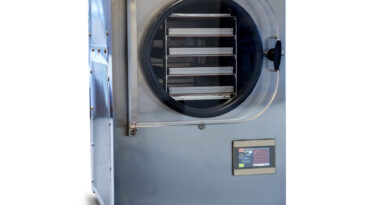Turnstile System as Security and Population Tracker
Turnstile system access control is designed to be practical and effective for the people who need access, while also keeping unauthorized individuals out. Turnstile gates and barriers can be practically used by authorized individuals while also being an effective way to keep unauthorized individuals from entering the premises.
A turnstile access control system is a type of gate that allows one person through a security checkpoint at a time. Turnstiles are found all over the world in places like hotels, amusement parks, and businesses. They help to track activity and keep unauthorized visitors out.
Turnstile systems are more versatile than you might think. You can switch turnstile operating modes to change their function from allowing single passage in one direction, to locked in both directions, to free passage in either one or both directions. Adding a lock chamber access mode can also provide an extra level of security with video or biometric verification.
Access control systems help businesses keep track of activity and allow certain people to enter specific locations. For example, high-security facilities like prisons, construction sites and manufacturing plants usually have access control systems with solid steel arms or shatterproof glass panels.
However, many people see sleek glass access control systems in places like offices, subway stations and government buildings. There are many reasons businesses choose to install access control systems. Security is often a top priority, but access control systems can also be used for things like tracking the comings and goings of employees or visitors.
There are several different types of turnstiles available, each designed for a different purpose. But once you understand how they work and what they’re intended for, it’s easy to find the right one for your needs.
Types of Turnstiles
Tripod Turnstile
A tripod turnstile, also known as a waist-high turnstile, is a dependable and durable turnstile option. The device is low-maintenance and uses three arms to manage the pace and volume of people entering a facility. The turnstile is usually set around 39 inches off the ground to accommodate most heights.
Tripod turnstiles are a type of access control system that is commonly used. There are manual versions that require coins to operate, as well as modern automated or motorized versions. Tripod turnstiles are typically found at subway stations, office buildings or universities.
Full-Height Turnstile
At 7 feet tall, a full-height turnstile is similar to a revolving door, but with a more industrial construction. Full-height turnstiles have a rotating gate separated by horizontal bars to keep people moving in one direction.
They also prevent people from jumping over the barrier. If someone does manage to scale over it, they’ll probably be noticed and questioned by security representatives.
High Entrance/Exit Turnstile
When it comes to turnstiles, businesses usually have two options to choose from: an exit-only turnstile or a high entrance/exit turnstile (HEET). HEETs rotate in both directions, so people can enter and exit as traffic allows.
Exit-only turnstiles, however, only rotate in a single direction. That way, the flow of traffic isn’t blocked. Exit-only full-height turnstiles are usually used at large venues like sports arenas, amusement parks, or concert halls.
Optical Turnstiles
Speed gates, also called optical turnstiles, are infrared sensor-operated devices that automatically identify people as they pass through, without the need for a security guard. People who are authorized to access a particular location will have a keycard or fob with the necessary credentials.
Once access is verified, the speed gate will open and allow the person to pass. However, if an unauthorized person attempts to pass through the gate, it will remain closed while light and sound alarms notify security of the potential breach.
Many corporate lobbies choose to have a barrier-free speed gate. This way, there is no physical object blocking someone from entering the facility. However, because of this, barrier-free speed gates are usually considered to be a passive measure. To make up for this, security personnel are usually stationed close by to restrict access if needed.
Security Door
A security door, also known as a “turnstile door,” provides a high level of security by only allowing one person to enter at a time. This makes it more difficult for unauthorized visitors to gain entry. Security doors are often used in high-security areas, such as government buildings or sensitive data centers.
Security doors are incredibly reliable, to the point where companies will often just leave them unsupervised. They’re commonly found in new office buildings that use employee keycard credentials or have escorted guest entrances. Businesses that use security doors usually find that they improve compliance with regulations and lower their overall risk.
Benefits of Turnstiles
A turnstile access control system is a great way to deter intruders, both in terms of visual deterrent and practicality. For more advanced security systems, a turnstile access control point can be equipped with security and surveillance technologies for a quick response to potential issues as well as live monitoring capabilities.
Having a secure office or worksite not only gives employees peace of mind, but it can also lead to improved productivity. When employees feel secure in their workplace, they can focus on their work tasks and goals instead of worrying about who might be lurking around. Additionally, a secure workplace can reduce stress levels for employees, as they won’t have to constantly worry about potential intruders.
Key Takeaway
A turnstile system is a great way to reinforce other security measures you have in place. Sometimes your security staff can get caught up with other things, but with a turnstile security checkpoint, your security team will be alerted immediately of any problems.


